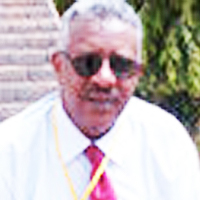Experience of Anesthesiology Residents in the conduct of their Research during Residency Training at Vicente Sotto Memorial Medical Center
Published on: 26th February, 2025
Introduction: Research provides a framework for Anesthesia residents who are critical thinkers who approach clinical practice with an open mind. The goal of this study was to determine current attitudes regarding performing research during residency as well as perceived obstacles to doing so. A resident physician should be ready to face the challenges of the growing technology, tons of journals published in different portals, and increasing sophistication of the health care delivery system. Practice-based learning, systems-based practices, and medical knowledge are the vital core directly affected by strong research skill set. Methods: The study was done through a survey of all 15 current residents in Vicente Sotto Memorial Medical Center Anesthesia Resident. They answered a 13 self-administered survey, which was adopted from previous similar research. Data was collected for 1 week to give time to the busy schedule of the resident. Results: Respondents cited that the lack of time in balancing clinical and research responsibilities is the most common obstacle encountered by 86.7% of respondents. Researchers feel they have inadequate research skills and a lack of time in balancing responsibilities between family and work was among the most common answers by the respondents. 2nd prevalent barrier to research during residency was a lack of mentoring. Conclusion: The top barriers to research are lack of time and inadequate access to research mentors. These barriers can be addressed to optimize the current research environment for residents. Anesthesia residents identified several critical aspects that they believe are obstacles to research. These findings can be used by programs to overcome hurdles and increase the inclusion of research into residency training.
Septic Shock on Bartholinitis: Case Report and Modern Surgical Approaches
Published on: 7th March, 2025
Bartholinitis, or Bartholin's gland abscess, is a relatively common gynecological condition among women of reproductive age. Its annual incidence is estimated at approximately 0.5 per 1,000 women, which corresponds to a lifetime cumulative risk of about 2%. The condition primarily affects patients between 20 and 50 years old, with a peak frequency observed between 35 and 50 years.After menopause, due to the natural involution of the gland, Bartholin's cysts and abscesses become less frequent, although they can still occur. Moreover, in women over 50, the appearance of a new mass in the gland region should prompt caution, as it may, in rare cases, indicate a carcinoma of the Bartholin's gland or an adjacent vulvar cancer. Therefore, for patients over 40 presenting with a newly emerged cyst or abscess, clinical guidelines recommend performing a biopsy or excision to rule out malignancy. We present the case of a 50-year-old woman with no significant medical history, who was urgently referred to the gynecological emergency department due to confusion, unexplained fever of 40 °C, and resistant leucorrhoea following a week of corticosteroid antibiotic therapy. Clinical examination revealed a large, tender right vulvar mass, indicative of an acute Bartholin's abscess. The patient exhibited signs of septic shock and was admitted to the ICU. Following a diagnosis of sepsis, broad-spectrum antibiotic therapy was initiated, alongside fluid resuscitation and norepinephrine support. Surgical drainage of the abscess confirmed the presence of E. coli. The patient's condition improved rapidly, and she was discharged on postoperative day 8 with no complications. This case underscores that while Bartholin's abscess is typically benign, severe complications, including septic shock, can occur—especially in patients over 50. The appearance of a new Bartholin's region mass in older women should prompt consideration of malignancy, necessitating biopsy or excision. Recent studies compare various therapeutic approaches including simple incision and drainage, Word catheter placement, marsupialization, silver nitrate application, and complete gland excision. Each method has its advantages and drawbacks, with marsupialization offering lower recurrence rates and higher patient satisfaction in many instances.
Survey of Advanced Image Fusion Techniques for Enhanced Visualization in Cardiovascular Diagnosis and Treatment
Published on: 6th March, 2025
Cardiovascular Diseases (CVDs) remain a major global health concern, necessitating accurate and comprehensive diagnostic techniques. Traditional medical imaging modalities, such as CT angiography, PET, MRI, and ultrasound, provide crucial but limited information when used independently. Image fusion techniques integrate complementary modalities, enhance visualization, and improve diagnostic accuracy. This paper presents a theoretical study of advanced image fusion methods applied to cardiovascular imaging. We explore wavelet-based, Principal Component Analysis (PCA), and deep learning-driven fusion models, emphasizing their theoretical underpinnings, mathematical formulation, and potential clinical applications. The proposed framework enables improved coronary artery visualization, cardiac function assessment, and real-time hemodynamic analysis, offering a non-invasive and highly effective approach to cardiovascular diagnostics.MSC Codes: 68U10,94A08,92C55,65T60,62H25,68T07.
Impact of the MELD Scale on Hospital Admissions for Hepatocarcinoma (2000 to 2018), Brazil
Published on: 14th March, 2025
Background: The health professional appears to be concerned given the number of questions surrounding the patient’s post-transplant survival, patient selection method, and the continuous search for scores that reflect their reality and reconcile the results they desire with the patient’s expectations. It is from these considerations that the present work was born with the purpose of understanding the reality of patients hospitalized for hepatocellular carcinoma and what adherence to the Model For End-Stage Liver Disease (MELD) criteria meant in Brazil. Methods: This study is a discrete, univariate time series on emergency hospitalizations that occurred between 2000 and 2018, in the city of São Paulo, Brazil. Python version 3.11 was the software used for statistical treatment and analysis of the time series. Results: There were 6887 hospitalizations for malignant neoplasm of liver and intrahepatic bile ducts, in the period 2000-2006, of which 2898 were elective and 3915 (56.85%) were urgent in the period. There was an increase of 63.97% in the number of emergency hospitalizations in relation to the period 2000-2006 and 2007-2013. To highlight, in 2013 there were 1270 emergency admissions, which represented an increase of 109.22% in relation to the number of emergency admissions in 2006. The contingency correlation analysis demonstrated a significant association between the variables in which the chi-square value was 82.18, the p-value was 1.24 x 10-19, and the critical value was 3.84 with one degree of freedom. There was a 123.65% increase in the number of hospitalizations for chronic hepatitis, not elsewhere classified, between the periods 2000-2006 and 2007-2013. The chi-square value of the contingency association was 221.22, with a p-value of 4.90 x 10-50, a critical value of 9.488, with a significance level of 5% and one degree of freedom. The study showed an increase in hospitalizations of 21.88% for alcoholic liver disease between the periods 2000-2006 and 2007-2013. In the period 2000-2006, there were 21330 hospitalizations, 19224 of which were urgent (90.13%). In the period 2007-2013, there were 25997 hospitalizations, of which 22,802 (87.71%) occurred urgently. The chi-square value was 68.95, the p-value was 1 x 10-16, and the critical value was 3.84, with one degree of freedom. Conclusion: The MELD score, as it is sensitive to the patient’s severity, selects those who are at an advanced stage of the disease for liver transplantation. In this scenario, patients do not necessarily have access to outpatient services and begin to attend them regularly when MELD identifies the advanced stage of the disease, opening a gap between prevention, treatment, and rehabilitation.
An Observational Study on Clinical Outcome and Predictors of Traumatic Cervical Injury at a Tertiary Care Facility
Published on: 26th March, 2025
Introduction: Cervical spinal cord injuries (CSIs) account for 2% - 3% of trauma cases and 8.2% of trauma- related fatalities, making them a significant cause of disability and mortality. Effective management and timely interventions are essential to improve neurological and functional outcomes. This study aimed to evaluate the outcomes of patients with CSIs and identify key predictors of neurological and functional improvement.Materials and methods: This prospective observational study was conducted over 12 months at SMS Medical College, Jaipur, involving 100 patients with CSIs from C1 to C7 vertebrae. Patients presenting within one week of injury were included. Clinical evaluation was conducted using the ASIA scoring system, and functional outcomes were assessed with the Functional Independence Measure (FIM) scale. MRI findings were analyzed to classify injuries and identify critical predictors, including the presence and extent of edema and listhesis grading.Results: Significant predictors of neurological improvement included injury type, management approach, MRI findings, extent of edema (≤ 2 vs. >2 segments), and listhesis grading. Operative management and incomplete injuries showed better outcomes. The median Barthel Index improved from 4.0 preoperatively to 7.0 at four months (p < 0.001). The mean FIM score also significantly increased from 43.25 ± 26.5 to 56.8 ± 40.75 (p < 0.05). ASIA Grades C and D demonstrated significant neurological recovery, with no grade deterioration observed.Conclusion: Age, injury type, management strategy, MRI findings, extent of edema, and listhesis grading are key predictors of outcomes in CSIs. These findings emphasize the importance of early diagnosis, timely surgical intervention, and comprehensive management in improving neurological and functional recovery. Multicentric studies with larger cohorts are recommended for broader generalizability.
Metastatic Brain Melanoma: A Rare Case with Review of Literature
Published on: 12th April, 2025
Melanoma is a highly malignant neoplasm arising from melanocytes, which are melanin-producing neural crest cells primarily located in the basal layer of the epidermis, making cutaneous melanoma the most common subtype. However, melanocytes are also found in other anatomical locations, and primary non-cutaneous melanomas, though rare, have been documented. Due to the aggressive nature of this malignancy, it carries a poor prognosis, particularly because it tends to metastasize to various, often atypical, sites. Recognizing these variable presentations is essential for timely diagnosis. Here, we report a rare case of metastatic brain melanoma in a young female and review the relevant literature, highlighting the importance of imaging in identification.
Comparison of Effect of Intrathecal Fentanyl 25µg with 0.5% Hyperbaric Bupivacaine and Only 0.5% Hyperbaric Bupivacaine
Published on: 12th April, 2025
Background: To enhance the duration of sensory anaesthesia and to prolong the duration of post-operative pain relief during spinal anaesthesia, various adjuvants have been tried along with local anaesthetic agent. The present study was undertaken to evaluate and compare the onset and duration of sensory block, motor block and duration of post-operative pain relief by using intrathecal 0.5% Hyperbaric bupivacaine with fentanyl 25µg versus only 0.5% Hyperbaric bupivacaine selected groups.Methods: We enrolled 70 ASA Ι & ΙΙ patients undergoing surgeries below umbilicus level for our Prospective Randomized trial. Those who met our inclusion criteria were randomized using simple random sampling technique, after obtaining informed consent. Patients in Group A received fentanyl 25µg with 0.5% Hyperbaric Bupivacaine and patients in Group B received only 0.5% Hyperbaric Bupivacaine intrathecally. Parameters like onset and duration of sensory and motor block and postoperative pain relief were observed. In postoperative period, VAS score was monitored & time for rescue analgesia was noted, when VAS exceeded 5 or above.Results: It was found that Patients in Group A had significantly prolonged duration of postoperative analgesia as compared to Group B (Z value 17.35). Results of Onset & Duration of sensory and motor block were suggesting insignificant result. Post-operative complication was insignificant in our study.Conclusion: Addition of Fentanyl 25µg with 0.5% Hyperbaric Bupivacaine in Spinal anaesthesia have insignificant effect on duration of sensory and motor blockade and prolongs postoperative pain relief.
















